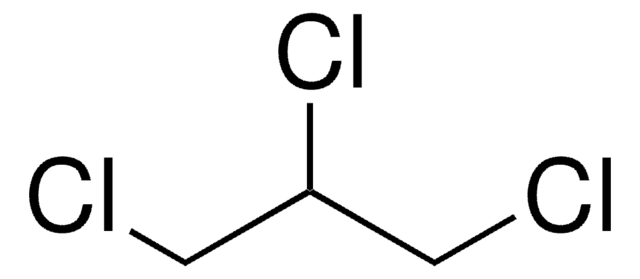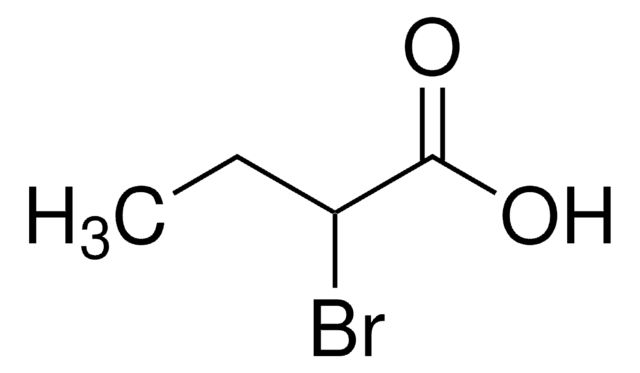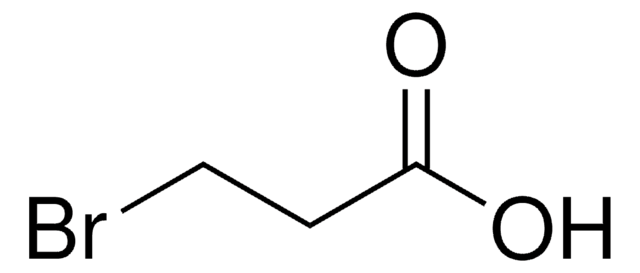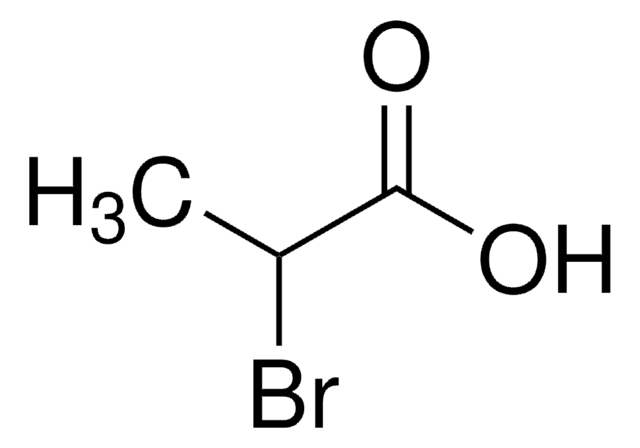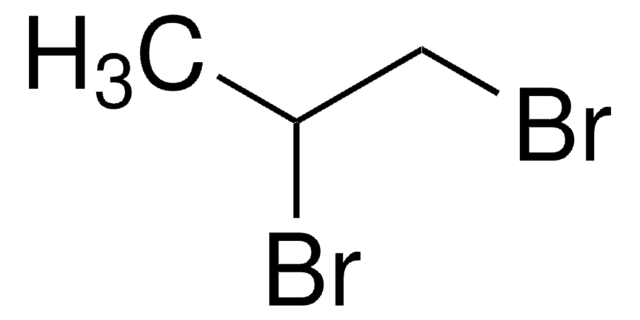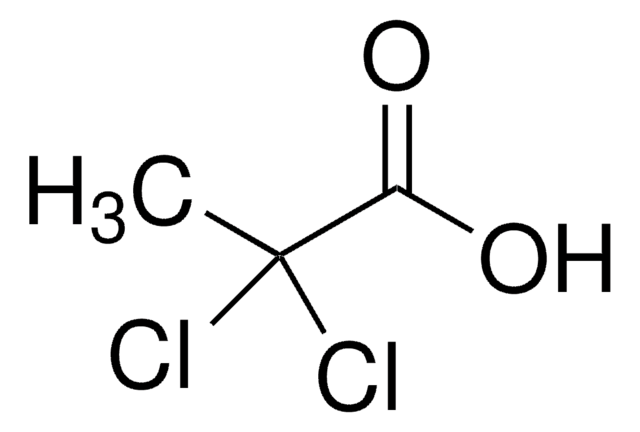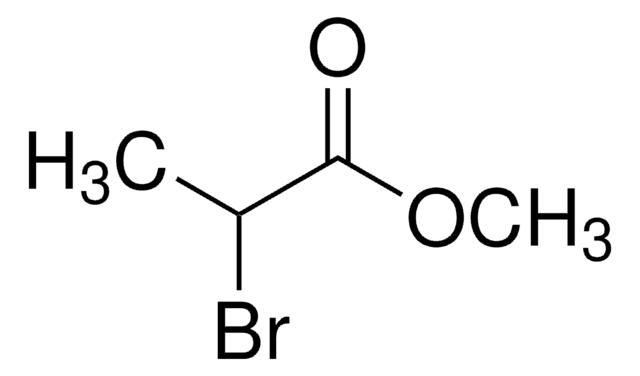Wszystkie zdjęcia(1)
Kluczowe dokumenty
About This Item
Wzór liniowy:
CH2BrCHBrCOOH
Numer CAS:
Masa cząsteczkowa:
231.87
Beilstein:
1721428
Numer WE:
Numer MDL:
Kod UNSPSC:
12352100
Identyfikator substancji w PubChem:
NACRES:
NA.22
Polecane produkty
Poziom jakości
Próba
98%
Formularz
solid
bp
160 °C/20 mmHg (lit.)
mp
64-66 °C (lit.)
grupa funkcyjna
bromo
carboxylic acid
ciąg SMILES
OC(=O)C(Br)CBr
InChI
1S/C3H4Br2O2/c4-1-2(5)3(6)7/h2H,1H2,(H,6,7)
Klucz InChI
ZMYAKSMZTVWUJB-UHFFFAOYSA-N
Szukasz podobnych produktów? Odwiedź Przewodnik dotyczący porównywania produktów
Powiązane kategorie
Zastosowanie
2,3-Dibromopropionic acid was used in chemical shift imaging during analysis of multiple samples by multiplex sample NMR methodology. It was used as surrogate standard during extraction and determination of haloacetic acid in drinking water.
Ta strona może zawierać tekst przetłumaczony maszynowo.
Hasło ostrzegawcze
Danger
Zwroty wskazujące rodzaj zagrożenia
Zwroty wskazujące środki ostrożności
Klasyfikacja zagrożeń
Skin Corr. 1B
Kod klasy składowania
8A - Combustible corrosive hazardous materials
Klasa zagrożenia wodnego (WGK)
WGK 3
Temperatura zapłonu (°F)
Not applicable
Temperatura zapłonu (°C)
Not applicable
Środki ochrony indywidualnej
Eyeshields, Faceshields, Gloves, type P3 (EN 143) respirator cartridges
Wybierz jedną z najnowszych wersji:
Masz już ten produkt?
Dokumenty związane z niedawno zakupionymi produktami zostały zamieszczone w Bibliotece dokumentów.
Carles Planas et al.
Analytical and bioanalytical chemistry, 411(17), 3905-3917 (2019-06-04)
A fast, simple, selective, and sensitive method for the analysis of 11 haloacetic acids (HAAs) in chlorine-treated water has been developed. The method is based on liquid chromatography-electrospray ionization-triple quadrupole tandem mass spectrometry (LC/ESI-QqQ-MS/MS) with direct injection of the aqueous
Occurrence and Determination of Haloacetic Acids in Metro Manila Drinking Water.
Rodriguez IB and Espino MPB.
Science Diliman, 21(2), 35-41 (2010)
T Hou et al.
Analytical chemistry, 73(11), 2541-2546 (2001-06-14)
Two improved approaches for the rapid analysis of multiple samples using multiplex sample NMR are described. In the first approach, frequency-selective 90 degrees radio frequency pulses and large pulsed field gradients are applied to excite and detect multiple samples in
Tarek Manasfi et al.
International journal of hygiene and environmental health, 220(3), 583-590 (2017-02-16)
An undesirable consequence of disinfection is the formation of chemical contaminants known as disinfection byproducts (DBPs). Chronic exposure to DBPs has been linked to adverse health effects. The occurrence of DBPs in chlorinated pools filled with seawater (such as thalassotherapy
Tarek Manasfi et al.
International journal of hygiene and environmental health, 222(1), 1-8 (2018-07-23)
Chlorination of seawater is one of the most effective technologies for industrial biofouling control. However, chlorination leads to the formation of halogenated chlorination byproducts (CBPs) associated with potential risks to environmental and human health. The present study investigated the occurrence
Nasz zespół naukowców ma doświadczenie we wszystkich obszarach badań, w tym w naukach przyrodniczych, materiałoznawstwie, syntezie chemicznej, chromatografii, analityce i wielu innych dziedzinach.
Skontaktuj się z zespołem ds. pomocy technicznej